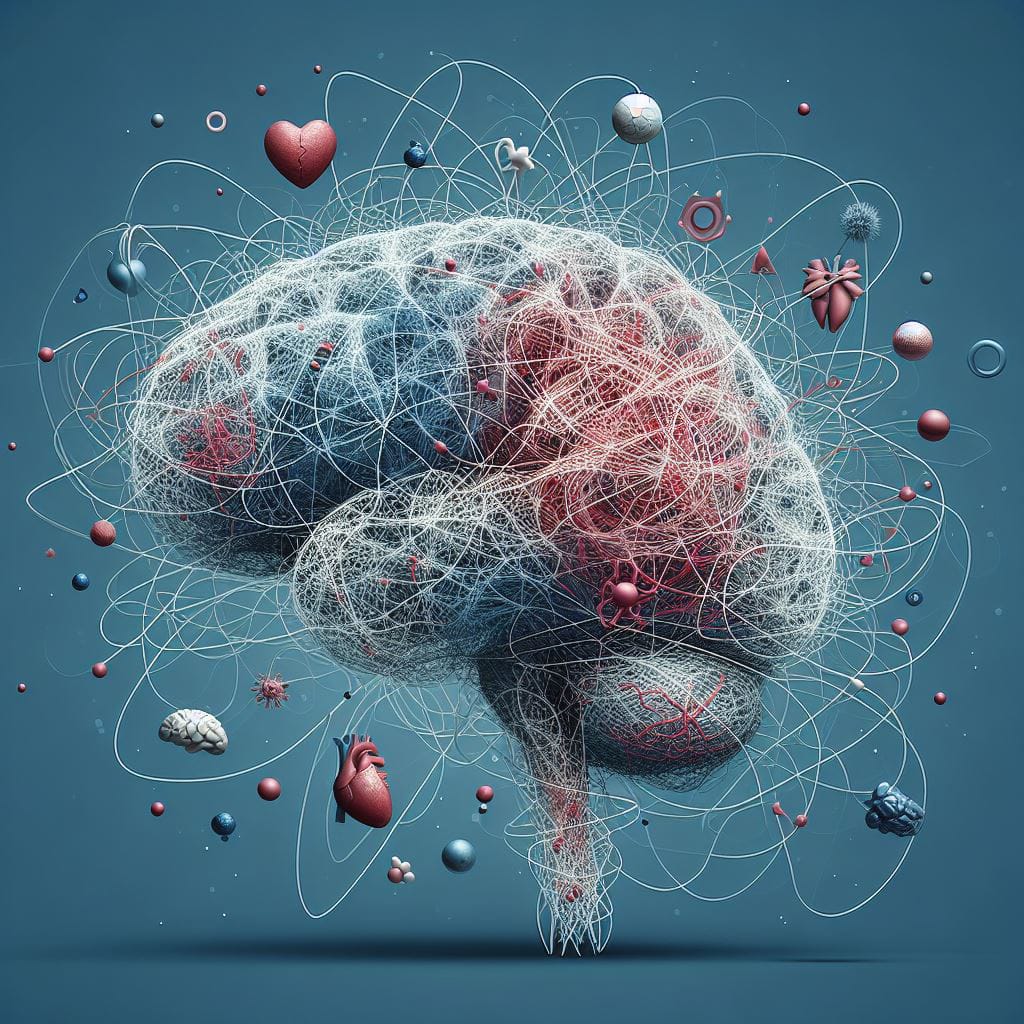Intracerebral haemorrhage (ICH) is a severe and often life-threatening condition characterized by bleeding within the brain tissue. This condition poses immediate risks and leads to long-term complications, significantly impacting the quality of life. While traditional treatments offer some relief, the need for innovative and effective solutions remains urgent. This article explores the latest advancements in ICH treatment, highlighting novel therapies and promising research areas.
Causes Of Intracerebral Haemorrhage
Intracranial hemorrhage, or bleeding within the skull, can be caused by a variety of factors. These causes can be broadly categorized into traumatic and non-traumatic origins:
Traumatic Causes
-
- Head Injury: Blunt force trauma from accidents, falls, or assaults is the most common cause. This can lead to:
-
- Epidural Hematoma: Bleeding between the inner surface of the skull and the dura mater.
-
- Subdural Hematoma: Bleeding between the dura mater and the arachnoid membrane.
-
- Contusions and Intracerebral Hematoma: Bruising or bleeding within the brain tissue itself.
Non-Traumatic Causes
-
- Hypertension: Chronic high blood pressure can weaken blood vessel walls, making them more prone to rupture, leading to hemorrhagic stroke.
-
- Aneurysms: Weak, bulging spots in blood vessel walls (cerebral aneurysms) can burst and cause bleeding.
-
- Arteriovenous Malformations (AVMs): Abnormal tangles of blood vessels connecting arteries and veins can rupture.
-
- Blood Disorders: Conditions like hemophilia, leukemia, or thrombocytopenia (low platelet count) can increase the risk of bleeding.
-
- Anticoagulant Therapy: Medications that thin the blood (such as warfarin, heparin, or direct oral anticoagulants) can increase the risk of spontaneous bleeding.
-
- Tumors: Brain tumors can bleed internally, either from the tumor itself or the surrounding blood vessels.
-
- Amyloid Angiopathy: Deposition of amyloid protein in the walls of cerebral arteries, which can lead to vessel rupture, especially in the elderly.
-
- Drug Abuse: The use of certain drugs, particularly cocaine and amphetamines, can increase the risk of intracranial bleeding.
-
- Vascular Disorders: Conditions like vasculitis (inflammation of blood vessels) can lead to bleeding.
-
- Infections: Severe infections like meningitis or encephalitis can cause blood vessel inflammation and rupture.
Symptoms Of Intracerebral Haemorrhage

Symptoms of intracerebral hemorrhage typically manifest suddenly and can vary depending on the location and extent of the bleeding. Common signs include a sudden severe headache, often described as the worst headache ever experienced. This is usually accompanied by nausea and vomiting. Patients may also exhibit neurological deficits such as weakness or numbness on one side of the body, difficulty speaking or understanding speech, and loss of balance or coordination.
Vision problems, such as double vision or loss of vision, can also occur. Additionally, individuals may experience confusion, altered levels of consciousness, or even sudden loss of consciousness. Seizures are another potential symptom, especially if the bleeding is extensive. Prompt medical attention is crucial as intracerebral hemorrhage is a medical emergency requiring immediate intervention.
Current Treatments For Intracerebral Haemorrhage
Current treatments for intracerebral hemorrhage focus on stabilizing the patient, controlling the bleeding, relieving pressure on the brain, and preventing complications. Here are the primary treatment approaches:
Medical Management
-
- Blood Pressure Control: Aggressively managing high blood pressure to reduce further bleeding. Medications such as intravenous antihypertensives are often used.
-
- Reverse Anticoagulation: If the patient is on blood-thinning medications, treatments to reverse their effects (such as vitamin K, fresh frozen plasma, or prothrombin complex concentrates) may be administered.
-
- Manage Intracranial Pressure: Medications like mannitol or hypertonic saline can reduce swelling and pressure inside the skull.
-
- Seizure Prevention: Antiepileptic drugs may be given to prevent seizures, which are common after intracerebral hemorrhage.
Surgical Interventions
-
- Craniotomy: In severe cases, a surgical procedure called craniotomy might be necessary to remove the blood clot and relieve pressure on the brain.
-
- Minimally Invasive Surgery: Techniques such as endoscopic or stereotactic aspiration to evacuate the hematoma with less disruption to the brain tissue.
-
- Decompressive Hemicraniectomy: Removing a portion of the skull to allow a swollen brain to expand without being squeezed.
Limitations On Current Intracerebral Haemorrhage Treatment
Current treatments for intracerebral haemorrhage, while improving outcomes and survival rates, have several limitations:
-
- Aggressively lowering blood pressure can sometimes lead to reduced blood flow to the brain, potentially causing further damage.
-
- Anticoagulation reversal agents can have limited effectiveness and may not be suitable for all patients. Additionally, reversing anticoagulation increases the risk of thromboembolic events.
-
- Medications to reduce intracranial pressure are not always effective, and their use can lead to side effects like electrolyte imbalances and renal issues.
-
- Antiepileptic drugs have side effects and do not prevent seizures in all patients.
-
- Craniotomy carries risks such as infection, bleeding, and further brain injury. It is not suitable for all patients, particularly those in poor overall health.
-
- While less disruptive, minimally invasive surgeries are not always effective in completely removing the hematoma and may not be suitable for all locations of bleeding.
-
- Decompressive hemicraniectomy can result in significant long-term disability and complications, and it is typically reserved for the most severe cases.
Given these limitations, there is a pressing need for new treatments to address ICH’s complexities more effectively. Researchers are exploring various innovative approaches to improving patient outcomes.
Emerging Drug Therapies For Intracerebral Hemorrhage

Emerging drug therapies include:
Hemostatic Agents
Hemostatic agents are designed to promote blood clotting and stop bleeding quickly. New formulations are being developed to target specific pathways involved in hemorrhage, potentially reducing the size and impact of the bleed.
Neuroprotective Drugs
Neuroprotective drugs aim to protect brain cells from the damage caused by ICH. These medications work by reducing inflammation, preventing cell death, and supporting the brain’s natural repair mechanisms.
Innovative Medical Devices For Intracerebral Hemorrhage
Some of these devices include:
Clot Removal Devices
New devices designed to remove blood clots more efficiently are in development. These tools can access hard-to-reach areas of the brain and provide a safer, more effective way to clear hemorrhages.
Brain Pressure Monitors
Advanced brain pressure monitors help manage intracranial pressure, a critical factor in the treatment of ICH. These devices provide real-time data, allowing for more responsive and personalized patient care.
Hemorrhage-Controlling Implants
Implants that can control bleeding and stabilize blood vessels are being explored. These devices could provide a long-term solution for patients prone to recurrent hemorrhages.
Gene Therapy and Molecular Targets For Intracerebral Hemorrhage
These targets include:
Gene Editing Techniques
Gene editing technologies, such as CRISPR, are being investigated for their potential to correct genetic predispositions to ICH. These techniques could offer a permanent solution by addressing the root cause of the condition.
Targeting Specific Genes and Proteins
Research is focused on identifying and targeting specific genes and proteins involved in the development and progression of ICH. This approach could lead to highly targeted therapies with fewer side effects.
Potential for Personalized Medicine
Personalized medicine tailors treatment to the individual characteristics of each patient. By understanding the genetic and molecular profile of a patient’s ICH, doctors can develop more effective, customized treatment plans.
Stem Cell Therapy
The main feature of stem cell therapy include:
Types of Stem Cells Used
Various types of stem cells, including neural stem cells and mesenchymal stem cells, are being studied for their potential to repair brain tissue and promote recovery after ICH.
Mechanisms of Action
Stem cells can differentiate into different cell types, support the regeneration of damaged tissue, and modulate the immune response. These properties make them a promising option for ICH treatment.
Clinical Trials and Outcomes
Clinical trials are ongoing to assess the safety and efficacy of stem cell therapies for ICH. Early results are promising, showing potential for improved recovery and reduced long-term disability.
Immunotherapy Approaches
Immunotherapy can also play an important role in recovery from intracranial hemorrhage.
Role of the Immune System in ICH
The immune system plays a crucial role in the response to ICH. Immunotherapy aims to modulate this response to reduce inflammation and support healing.
Immunomodulatory Treatments
Treatments that adjust the immune response are being tested for their ability to improve outcomes in ICH patients. These therapies could help reduce secondary brain damage and support recovery.
Current Research and Future Directions
Ongoing research is exploring various immunotherapy approaches, including the use of monoclonal antibodies and immune checkpoint inhibitors. These treatments hold promise for future ICH management.
Nutritional and Lifestyle Interventions
These interventions include:
Dietary Changes for ICH Patients
Proper nutrition is essential for recovery. Diets rich in antioxidants, omega-3 fatty acids, and other brain-healthy nutrients can support healing and reduce the risk of future hemorrhages.
Exercise and Physical Therapy
Regular exercise and physical therapy are crucial for regaining strength and mobility after ICH. Tailored exercise programs can improve physical health and support neurological recovery.
Stress Management and Mental Health
Managing stress and maintaining mental health are vital components of recovery. Techniques such as mindfulness, meditation, and counseling can help patients cope with the emotional impact of ICH.
Integrative and Complementary Therapies
These therapies include:
Acupuncture and Traditional Medicine
Acupuncture and other traditional medicine practices are being explored for their potential benefits in ICH recovery. These therapies may help reduce symptoms and improve overall well-being.
Mind-Body Therapies
Mind-body therapies, including yoga and tai chi, can enhance physical and mental health. These practices promote relaxation, reduce stress, and support holistic recovery.
Patient Testimonials and Case Studies
Real-life stories and case studies provide valuable insights into the effectiveness of various treatments. Patient testimonials highlight the benefits and challenges of different approaches, offering hope and guidance to others.
Read: 13 Hallmarks Of Aging: Can You Prevent Aging?
Conclusion
The quest for novel treatments and targets for intracerebral hemorrhage is a dynamic and rapidly evolving field. From advanced drug therapies and innovative surgical techniques to cutting-edge medical devices and personalized medicine, the future holds promise for more effective and safer treatments. As research progresses, the hope is that these advancements will significantly improve the prognosis and quality of life for ICH patients, offering them new avenues for recovery and a better future.
